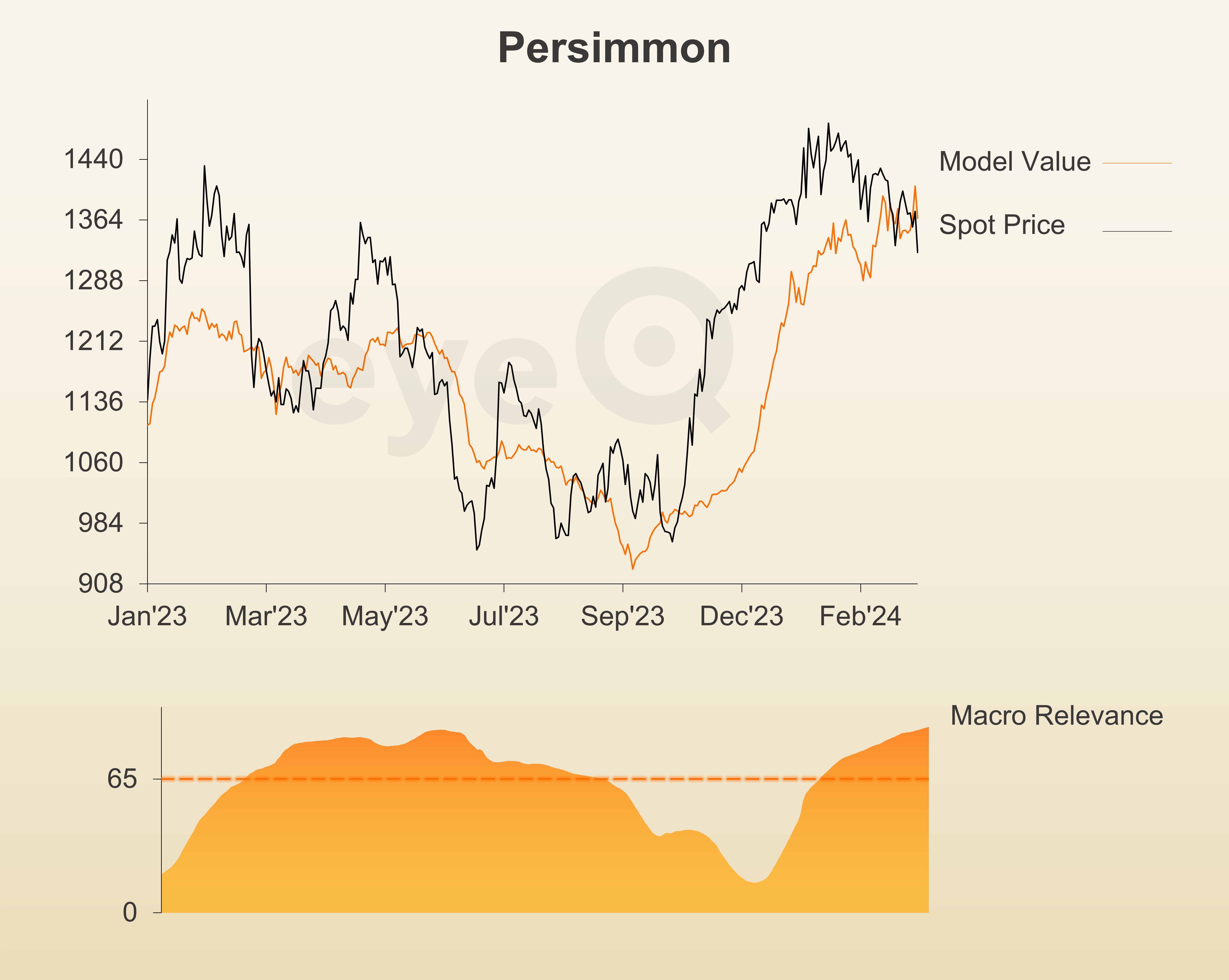Persimmon results reveal much damage to repair
Reaction to these annual results reflects concern about whether or not the tide has finally turned for the housebuilding sector, and there is a decision on dividend strategy. ii's head of markets examines the numbers.
12th March 2024 08:37
by Richard Hunter from interactive investor

Against a particularly torrid backdrop, Persimmon (LSE:PSN)’s numbers have inevitably plummeted, although there are emerging signs that the housing market could be at a turning point.
The litany of headwinds for this reporting year are well-known, with the sector facing the combined challenges of lower mortgage availability and affordability, stubborn build cost inflation, higher interest rates and understandably less buying interest.
- Invest with ii: Open a Stocks & Shares ISA | ISA Investment Ideas | Transfer a Stocks & Shares ISA
Margins have also suffered given the effects of lower volumes, increased marketing costs and build costs which has not been enough to offset a modest increase in average selling prices, while the recently announced Competition and Markets Authority probe into issues including poor build quality and potential price collusion is an unwelcome development.
The removal of the Help to Buy scheme has had a particular impact on first time buyers, an area to which Persimmon has had a traditionally higher exposure. The general bureaucracy of the planning process is another headwind, while the lower sales rate and indeed forward order book imply that the current raft of pressures are still in place.
As such, the headline numbers do not make for pleasant reading. Revenue came in at £2.77 billion, down 27% from the previous year, although marginally ahead of estimates of £2.65 billion. Pre-tax profit bombed by 52% to £352 million, which was in line with expectations. The generally dour environment also impacted on other key metrics, with underlying operating margin down to 14% from a previous 27.2% and the underlying return of capital at 10.5% from 30.4% in the corresponding period.
Set against this challenging cyclical environment, Persimmon has been working hard to assert some influence on the factors within its control. The introduction of incentives and a part-exchange scheme have shown some signs of mitigating the wider malaise, while the group continues to acquire new land opportunities on what it describes as an exceptional basis.
- eyeQ: are Persimmon shares vulnerable to macro shock?
- Stockwatch: this bullish company is positive indicator for global economy
- Sign up to our free newsletter for investment ideas, latest news and award-winning analysis
An overall forward order book of £1.6 billion is still much lower, but is showing signs of improvement from the start of the year, while full-year completions of 9,922 exceeded the previously guided range of between 8,000 and 9,000 homes following a strong delivery in the fourth quarter. For this year, the guided range has been increased to between 10,000 and 10,500 completions, with an early boost hopefully coming from the imminent Spring selling season.
At the same time, its ability to manage costs through its ownership of brick, tile and timber frame factories sets it aside from its competitors, guaranteeing a cost-effective and resilient supply of building materials. Build cost inflation nonetheless remained around a stubborn 5%, although this represents an improvement from the previous levels of 9% to 10% and indeed is forecast by the group to fall to between 3% and 5% this year.
The group also retains net cash of £420 million and excess extra liquidity of £700 million, the combined total of which could be used this year in anticipation of a housing market upturn as Persimmon ramps up investment.
Land holdings remain in excess of 82,000, while the average reservations per outlet per week for the initial part of this trading year are showing signs of renewed life. In the meantime, a more prudent dividend that had been reduced previously, leaves the yield at a respectable 4.4%. After holding the annual dividend at 60p this time, the company says it wants to "at least maintain the 2023 dividend per share in 2024, with a view to growing this over time as market conditions permit".
- ii view: is income play Taylor Wimpey a buying opportunity?
- The simple maths that can make you an ISA millionaire
- Wild’s Winter Portfolios 2023-24: massive outperformance by consistent stocks
Persimmon will be hoping that these results signal the bottom of the economic cycle to which the sector is bound, with significant pent-up demand, improving mortgage affordability and availability given wage growth and competition, and with its own marketing campaign generating a notable increase in leads.
Even so, there is also much damage to repair, not least of which is a share price which has declined by 37% over the last two years and by 54% over the last three. The performance has stabilised recently in anticipation of a pick-up in the market and falling interest rates, with a rise of 11% over the last year comparing with an increase of 1.6% for the wider FTSE100 and including a bounce of 33% over the last six months, notwithstanding the tepid reaction to the numbers in early trade today.
The more recent improvement saw Persimmon regain its FTSE100 status somewhat by default in January, following the delisting of Dechra Pharmaceuticals after its own relegation in September last year. Glimmers of hope aside, the general market view of the shares as a 'hold' represents a split of opinion that the tide has finally turned, implying much more interest in Persimmon’s trading performance in the months to come.
interactive investor has recently teamed up with experts at eyeQ who use artificial intelligence, macro factors and their own smart machine to generate actionable trading signals. Here’s what it says about Persimmon:
“Persimmon has fallen to its lowest level of the year after downbeat commentary about the UK housing market and the company’s prospects in 2024.
“One of eyeQ’s earliest notes on the ii platform warned that the homebuilder was “vulnerable”. It sat 8.9% rich to macro conditions at the time and we flagged how the stock was pricing in a lot of good news with regard to slowing inflation and Bank of England rate cuts.
“One month on and that valuation gap has now closed, with the stock trading very close to eyeQ model value which has risen to 1,364.62p. But the main reason the valuation gap has closed is the stock has fallen nearly 7% since the open on 13 February.
“Investors need to watch eyeQ’s model for clues on future direction. Right now, the smart machine is neutral, with the stock trading where it “should”. But with model relevance high (90%) and rising, macro events are critical.”

These articles are provided for information purposes only. Occasionally, an opinion about whether to buy or sell a specific investment may be provided by third parties. The content is not intended to be a personal recommendation to buy or sell any financial instrument or product, or to adopt any investment strategy as it is not provided based on an assessment of your investing knowledge and experience, your financial situation or your investment objectives. The value of your investments, and the income derived from them, may go down as well as up. You may not get back all the money that you invest. The investments referred to in this article may not be suitable for all investors, and if in doubt, an investor should seek advice from a qualified investment adviser.
Full performance can be found on the company or index summary page on the interactive investor website. Simply click on the company's or index name highlighted in the article.